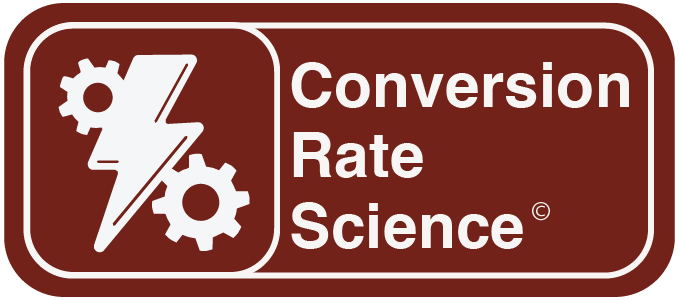CRO in context
Conversion Rate Optimization (CRO) has become an essential tool for digital marketers, UX designers, and product managers who aim to maximize the potential of their websites and digital products. Despite its importance, many professionals still struggle with the practical application of CRO strategies. This article explores the most common issues that CRO helps address and how effective strategies can turn these challenges into growth opportunities.1. The Challenge of Low Conversion Rates
Driving traffic to a website is only the first step. Converting that traffic into meaningful actions, such as purchases, sign-ups, or inquiries, is where many businesses fall short. Low conversion rates are a widespread issue, often stemming from unclear calls to action (CTAs), poor user experience, or ineffective design. How CRO Solves This: CRO focuses on identifying bottlenecks in the conversion process. This often involves A/B testing different versions of web pages to see what design or content changes lead to better outcomes. By analyzing user behavior and feedback, businesses can create more tailored experiences that guide visitors toward the desired actions. Example Tactics:- A/B Testing: Try two different versions of a landing page to see which one performs better.
- Heat Mapping: Understand where users are clicking, scrolling, and abandoning your site to improve layout and functionality.
2. Intuition vs. Data: Why Guessing Doesn’t Work
Many businesses rely on intuition or outdated practices when making decisions about website design or content. This often leads to inconsistent results, wasted time, and missed opportunities. Relying solely on gut feeling can be especially dangerous in competitive industries where small improvements can make a huge difference. How CRO Solves This: CRO is rooted in data-driven decision-making. Instead of guessing what users want or need, CRO uses analytics to track and understand user behavior. By gathering and analyzing data from multiple sources—such as Google Analytics, heat maps, or feedback surveys—marketers can make informed, evidence-based changes to optimize their conversion rates. Example Tactics:- Data-Driven A/B Testing: Use tools like Google Optimize or Optimizely to conduct experiments and collect meaningful data to inform decisions.
- User Surveys and Feedback: Directly gather insights from visitors to understand why they may not be converting.
3. Enhancing User Experience (UX) for Better Conversions
A poor user experience is often the hidden cause of low conversion rates. Factors like slow page load times, confusing navigation, or non-responsive design can discourage users from taking action. If visitors encounter friction during their journey, they are more likely to leave before completing a conversion. How CRO Solves This: CRO focuses heavily on improving user experience to ensure that visitors find what they need quickly and easily. Simplifying navigation, speeding up load times, and offering clear, engaging content are all CRO best practices. When the user experience is seamless, users are more likely to stay, engage, and convert. Example Tactics:- Mobile Optimization: Ensure that your site is responsive and user-friendly on all devices.
- Reducing Page Load Times: Use tools like Google PageSpeed Insights to speed up your site, making it more accessible and reducing drop-offs.
4. Navigating the CRO Tool Landscape
One of the challenges in CRO is choosing the right tools to conduct tests, gather insights, and implement changes. With so many options available—A/B testing platforms, heat mapping tools, user behavior analytics, and more—it’s easy to feel overwhelmed. How CRO Solves This: Conversion Rate Science helps you navigate this tool landscape by introducing and teaching the best tools for CRO. Tools like Google Optimize, Hotjar, and Crazy Egg can help you test variations, track performance, and understand user behavior in greater depth. Once equipped with the right tools, you can make more informed decisions and reduce guesswork. Example Tactics:- Using Heat Maps (e.g., Hotjar or Crazy Egg): Visualize where users are interacting most on your website to optimize key elements.
- Behavior Analytics (e.g., Google Analytics): Track user flow and drop-off points to identify where improvements can be made.
5. Continuous Improvement: The C-T-E-R Framework
Conversion optimization is not a one-time effort; it’s an ongoing process. For sustained improvement, a structured approach is crucial. Without one, businesses risk stagnating, leaving opportunities for growth untapped. How CRO Solves This: The C-T-E-R framework—Create, Track, Evaluate, Refine—guides ongoing optimization efforts. Each phase ensures you’re constantly iterating and improving based on fresh data and performance insights.- Create: Design new versions or variations of your web pages or user experiences.
- Track: Use analytics and CRO tools to gather data on performance.
- Evaluate: Analyze the results to understand what worked and what didn’t.
- Refine: Adjust your approach based on your findings, and start the process again.
Key Takeaways: How CRO Transforms Your Digital Strategy
CRO addresses several key challenges in digital marketing, from low conversion rates to poor user experience. By implementing a data-driven approach, leveraging the right tools, and focusing on continuous improvement, businesses can optimize their digital strategies to increase conversions and grow their customer base. Whether you’re new to CRO or looking to refine your skills, Conversion Rate Science offers a structured, in-depth look at how to apply these principles effectively. By learning how to Create, Track, Evaluate, and Refine your approach, you’ll be equipped to drive better results for your business.Conclusion
If you’re struggling with low conversion rates or unsure how to turn traffic into tangible results, CRO offers the solution. By embracing a data-driven mindset, improving user experience, and using the right tools, you can overcome these challenges and set your business up for long-term success.Ready to get started on optimizing your conversions? Explore Conversion Rate Science to learn more.
